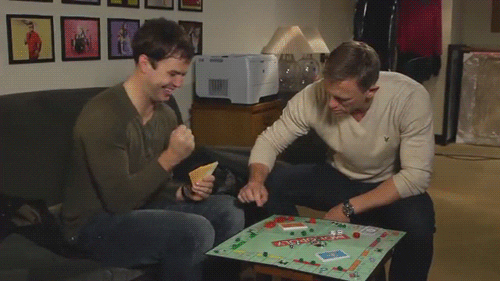When Investing Gets Tough, Blow Your Portfolio a Raspberry
Investing is tough. Seeing your investments lose value sucks. It feels like losing, doesn’t it? Kind of like your investment balance is how many points you have (you win by hitting a million?) and you’re actively losing points. Why? Because you… picked the wrong choice in the game? Depending on what you’ve invested in, that’s not what’s happening. Not just ‘cause this ain’t a game, either.

Funny to think about my holdings as a portfolio because that’s a rich people term, but with a quarter million still invested I guess I am a rich people. Thanks to my risk tolerance being very high, this is more annoying than anything else. That investing zen, however, did not go untested.
So far now, I’ve officially weathered the COVID crash in 2020, the Era of Zero Return in 2018, and – now – the January 2022 market correction. That’s three times I’ve been tested in roughly half a decade of investing. You’re also going to be tested in this manner because that’s how the stock market works. The testing, specifically, is over your risk tolerance. It is going to suck the first time. If this market correction is your first time, welcome. Take it as a learning experience and buckle in, friend.
Risk Tolerance
Here’s a quick refresher on investing terms if you’d like; here I’m going to go over what risk tolerance is and why it’s (arguably) the most important part of your investment strategy. In a nutshell, risk tolerance is all about how much you can tolerate seeing your hard-earned dollars go down the crapper in a bad market year. The human mind is instinctively wired to have low risk tolerance; if your prehistoric ancestors ran into a bear, they’re going to GTFO come hell or high water. Fast forward to today, and you’ll discover the only menacing bears come in the form of a bear market.
Bear markets, by definition, mean the market is down by at least 20% for at least 2 months. While it’s not a literal bear ready to hunt you, unprepared investors react like it is. They have fallen back to the panic response of our ancestral legacy, with the monkey mind confusing a hulking predator with a human construct. This isn’t meant to degrade such panic, as it’s an all-too-human response to a sudden challenge. I’m not making fun of, or railing against, those who got rattled. It takes conscious rewiring to avoid the kneejerk rush to sell, sell, sell in a market dip. That rewiring, by another name, is nothing more than upping your risk tolerance.
For someone who’s young and new to the investing world, knowing where your current risk tolerance is at is key to saving you a lot of financial and emotional pain.
“I Paid a Premium for a Seat Back at the Table”
I can’t have said this any better than the timeless words of JL “Jim” Collins, a giant in the financial education space. It’s pretty hard to argue against his easy-to-understand approach to explaining the stock market. He has a phenomenal 36-part Stock Series on the topic, but we’re going to focus on his Part 2, called “The Market Always Goes Up”.
In this article he gives plenty of data points and other great info to explain why you’re going to want to stay in the market during a downturn instead of pulling out your money. At the beginning he gives a poignant example no investor younger than 40 has experienced: pulling out of the stock market after Black Monday. That day in 1987 left bankers everywhere shaking and breaking down. Why? Because the stock markets lose roughly 20% of value in just one day. That means you saw your $10,000 investment lose over $2,000 in mere hours of trading. Every major stock market on the globe suffered drops, with some overseas that saw drops over 40%.
Jim was an investor then who hadn’t built up his risk tolerance yet. He paid for that dearly, exiting the market entirely a few months later and essentially “locking in” his losses. See, your investment value will go up and down while it stays invested. You only lock in the price when you finally choose to sell your investments. That’s what Jim ended up doing – and citing it as something he regrets.
In his own words:
I lost my nerve and sold. I just wasn’t tough enough. That day, if not the absolute bottom, was close enough to it as not to matter. Then, of course and as always, the market began again its relentless climb. The market always goes up. It took a year or so for me to regain my nerve and get back in. By then it had passed its pre-Black Monday high. I had managed to lock in my losses and pay a premium for a seat back at the table. It was expensive. It was stupid. It was an embarrassing failure of nerve. I just wasn’t tough enough.
Still Need to Take Action?
Jim’s testimony should tell it all: your risk tolerance can make or break you as an investor, proving it’s best to stay the course and resist taking your money out.
It’s great in theory. It’s also a hard pill to swallow when you’re actively watching your monies going down the drain because of some Wall Street fuckup. That money is actively getting flushed away, and you’re getting told to do nothing about it?! No fucking way! You’re going to make SURE the world knows you’re doing something about it!!!!
So if you really need to do something about it, no matter what I or wise sages like Jim tell you, then okay. Here are the best actionable steps to take for dealing with market corrections like this one.
Step 1: Blow Your Portfolio a Raspberry
I knew a market dip was going to happen thanks to folks like Jim who warned me about it. I trusted the historical data I read up on. Most importantly, I worked out how I’d react when that’d take place.
When, not if. This is an inevitability.
If the mere thought of a dip made me sick to my stomach, I’d have known my risk tolerance wasn’t up to snuff. Luckily, that was not my reaction: the only physical reaction I had was pursed lips.

So, thanks to these insights, I plotted my fallback in case I couldn’t just do nothing. When I’d see my investments take a dump, I will blow a raspberry. Here’s an example if you would like a demonstration:
There are many benefits to blowing a raspberry in this scenario. It acknowledges the situation at hand with an appropriate response. It also tells your brain “hey look, I did something about the situation and took action, so no need to worry further about it!” Plus, it’s a funny noise, and funny noises give you dopamine. Depending on how old you are, it may revert you to nostalgic childhood days on the playground, when blowing a raspberry was the height of badassery. Ahh, youth.
For those with lower risk tolerances reading this and thinking this suggestion is shit: I would like to gently squeeze your hand and tell you that you now know more about what the best investment strategy is for you. Because we are two different people, my strategy is going to look different from yours. That’s totally okay; all it means is you’ll know to tweak your strategy going forward with the next steps here.
Step 2: Stop Looking At Your Portfolio So Often
If your risk tolerance is low and you know it, you should only check in with your investments a few times a year, at most. As a long-term investor in index funds, those check-ins should be even more rare. The numbers say the market is going to bounce back, but only if you don’t sell and lock in those losses. Don’t be like the panicked investors from 1987. YOU DO NOT WANT TO PANIC SELL.
Need more than one anecdote? Look no further than the Bogleheads forums in 2008. Bogleheads are self-proclaimed investing enthusiasts and thrive to this day on their old-school boards. Yet even they aren’t immune to sustained market dips like what we saw in the Great Recession. One thread has several pages’ worth of discussing “Plan B”. Another sums up 2008 as the “Worst. Year. Ever.” And the sticky thread from that time urged readers not to react emotionally, to please please please not lose their minds.
These were folks who built up an entire community around being investing nerds while I was still in middle school. They’re the ones who are best positioned to deal with a recession, yet still got spooked when the chips were down. The one most hard to read is from this guy, who wrote, with despair, how he needs to sell as he can’t watch his investments go down anymore. There wasn’t much folks could say to counter such bleak words.
Which is all to say: you don’t need to add more stress to your plate by worrying over negative market fluctuations. Do yourself a favor and trust in the wisdom of holding index funds over the long term.
Step 3: Research and Consider Rebalancing
Now it’s time to retool your investing to better fit your risk tolerance. There’s no shame and absolutely nothing wrong with choosing a different balance to your investments. What you want to do now is put in the research on stock’s partner: bonds.
I’ve talked about stock market index funds before. Each investment brokerage has its own fund, like VTSAX from Vanguard or FSKAX from Fidelity. What I haven’t discussed enough are bond index funds; there are plenty of great bond funds out there that would be a good fit to your portfolio. Heck, I’ve got thousands of dollars in bonds myself, including Treasury I bonds that are paying out a 7.12% interest rate (yep, really).
Bonds might be known for having lower returns, but they’re absolute lifesavers when the going gets tough. While the numbers might suggest being all-in on the stock market is the best long-term strategy, it doesn’t take into account your own human needs. You want to stay invested without panic-selling or heightening your anxiety. If adding bonds will alleviate that panic, it’s well worth it.
Once you settle on what bonds make the most sense, decide what percentage of your money you want invested in them. If you see someone saying their portfolio is “conservative,” they mean they hold a lot of bonds. The couple behind Millennial Revolution are pretty conservative with their asset allocation, with 60% in equities (aka, the stock market) and 40% in bonds. Over the years, that’s worked quite well for them. This is what I would suggest you look at and consider.
Once the market recovers, sell what equities you have any buy bonds in their place. The term for this is called “rebalancing”. Millions of investors rebalance every single year, so you’re simply going to join their ranks.
Step 4: Center Yourself
Finally, go touch some grass.
This is a genuine piece of advice, not an insult or teasing. Go touch some grass, sand, snow, tree bark, whatever is just outside your front door. Doing so will steady you, plant you back into a reality where investing at all is nothing more than a social construct. It’s important, sure, but nowhere near as physically real as that grass.
Look! It’s green, with each blade made up of smaller vertical fibers. They almost look like they’re woven together like that, Mother Nature lovingly teasing them from her underground loom through the soil above. They’ve even got a similar texture to other fabrics, the ones you used to run your fingers across as a little kid. Remember that?
There are countless blades of them all around you. Cushioning your steps as you meander across. Grouped together to greet you at the edge of the curb, in a forest clearing, in the middle of the city when you least expect their tinny “hellos”.
Go touch the grass. It’s there to help.
Taking a deep breath is optional here. It helps if you do it.
Or blow another raspberry. That helps bring out a laugh.
Cover image credit: Chris Bair via Unsplash


It sounds weird when losing lots of money to just go outside and touch something, but that’s exactly what’s needed here. You have to find joy in the little things. I like sunshine, even on a cold winter day.
Pingback:Women’s Personal Finance: Wednesday Roundup March 2, 2022
Pingback:Lost $50k On Paper (And I’m Doing Just Fine) - We Want Guac